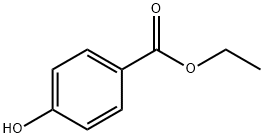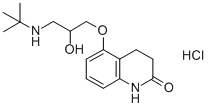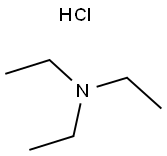Bevantolol hydrochloride
- CAS NO.:42864-78-8
- Empirical Formula: C20H28ClNO4
- Molecular Weight: 381.89
- MDL number: MFCD00941389
- SAFETY DATA SHEET (SDS)
- Update Date: 2024-11-19 23:02:33

What is Bevantolol hydrochloride?
Description
Bevantolol hydrochloride is a cardioselective (β1) adrenergic blocker, devoid of intrinsic sympathomimetic and local anesthetic activities. As with other agents of this category, it is useful in the treatment of hypertension and angina.
Description
Bevantolol is an antagonist of the β1-adrenergic receptor (β1-AR; Ki = 14.79 nM in rat cortical membranes). It is selective for β1- over β2-ARs (Ki = 588.84 nM), as well as α2-ARs up to 100 μM, but is an antagonist of α1-ARs (Ki = 125.89 nM). Bevantolol inhibits low voltage-activated calcium currents (LVA-ICa) in dissociated rat ventro-medial hypothalamic neurons (IC50 = 40 μM). It inhibits norepinephrine-induced contraction of isolated rabbit thoracic aorta (pA2 = 4.77), isoprenaline-induced inotropic effects in isolated guinea pig right atria (pA2 = 7.74), and isoprenaline-induced relaxation of isolated guinea pig trachea (pA2 = 6.69). Bevantolol (250 mg/kg per day) prevents immobilization stress-induced increases in systolic blood pressure in a rat model of stress-induced hypertension.
Chemical properties
Off-White Solid
Originator
Warner-Lambert (USA)
The Uses of Bevantolol hydrochloride
Bevantolol is a cardioselective β-adrenergic blocker. Bevantolol is used as an antianginal, antihypertensive, antiarrhythmic.
Definition
ChEBI: The hydrochloride salt of bevantolol.
Manufacturing Process
To a solution of 50 g (1.25 mol) of NaOH in 1200 ml H2O was added 108 g (1
mol) of m-cresol freshly distilled and at 15°C in one lot 117ml (1.5 mol) of
epichlorohydrin. The emulsion was stirred at room temperature for 16 hours in
a creased flask. The product was taken up in 1000 ml of toluene and washed
with 500 ml water. Distillation yielded 135.7 g=82% of 3-(m-tolyloxy)-1,2-
epoxypropane, b.p. 61°C at 0.05 mm.
Preparation of bevantolol hydrochloride:
To a suitable reactor under a nitrogen blanket is added 13.7 kg of β-(3,4-
dimethoxyphenyl)ethylamine. The amine is cooled to 5°C and 12.5 kg of 3-
(m-tolyloxy)-1,2-epoxypropane is added maintaining the temperature between
5-10°C. After 10 hours, the mixture is seeded with bevantolol free base;
seeding is repeated approximately every 2 hours until it is evident that
crystallization has started. After stirring for 48 hours at 10°C, 26 L of hexane
is added. The temperature is raised to 25°C and stirring is continued for 48
hours. The slurry is filtered and the collected solid is dried under vacuum. The
product is dissolved in 60 L of isopropyl alcohol and the solution is filtered.
The reactor and filter are rinsed with 186 L of isopropyl alcohol and 2.7 kg of
anhydrous hydrogen chloride is added to the combined filtrate. The batch is
heated to reflux for 2 hours. The temperature is adjusted to 65°C and the
solution is seeded with bevantolol hydrochloride crystals. The mixture is held
at this temperature with stirring until a heavy sand-like slurry is present. The
mixture is allowed to cool to ambient temperature without stirring or artificial
cooling. It is then cooled to 20°C. The slurry is centrifuged and the product
rinsed with isopropyl alcohol until the filtrate is colorless. After being vacuum
dried at 50-55°C the product is milled if necessary; yield of bevantolol
hydrochloride 22.7 kg (78.6%); melting point 137-138°C.
brand name
Vantol (Parke-Davis);Ranestol.
Therapeutic Function
Antiarrhythmic, Beta-adrenergic blocker
Hazard
Moderately toxic by ingestion.
Safety Profile
A poison by intraperitoneal andintravenous route. Moderately toxic by ingestion. Whenheated to decomposition it emits toxic vapors of NOx,HCl, and Cl-.
Properties of Bevantolol hydrochloride
| Melting point: | 137-138° |
| storage temp. | Sealed in dry,Room Temperature |
| solubility | DMSO (Slightly), Methanol (Slightly) |
| form | Solid |
| color | White to Off-White |
| Merck | 14,1192 |
| CAS DataBase Reference | 42864-78-8 |
Safety information for Bevantolol hydrochloride
| Signal word | Warning |
| Pictogram(s) |
 Exclamation Mark Irritant GHS07 |
| GHS Hazard Statements |
H315:Skin corrosion/irritation H319:Serious eye damage/eye irritation |
| Precautionary Statement Codes |
P280:Wear protective gloves/protective clothing/eye protection/face protection. P302+P352:IF ON SKIN: wash with plenty of soap and water. P305+P351+P338:IF IN EYES: Rinse cautiously with water for several minutes. Remove contact lenses, if present and easy to do. Continuerinsing. P332+P313:IF SKIN irritation occurs: Get medical advice/attention. P337+P313:IF eye irritation persists: Get medical advice/attention. |
Computed Descriptors for Bevantolol hydrochloride
New Products
4-AMINO-TETRAHYDRO-PYRAN-4-CARBOXYLIC ACID HCL 4-(Dimethylamino)tetrahydro-2H-pyran-4-carbonitrile 4-Aminotetrahydropyran-4-carbonitrile Hydrochloride (R)-3-Aminobutanenitrile Hydrochloride 3-((Dimethylamino)methyl)-5-methylhexan-2-one oxalate 1,4-Dioxa-8-azaspiro[4.5]decane 5-Bromo-2-nitropyridine Nimesulide BP Aceclofenac IP/BP/EP Diclofenac Sodium IP/BP/EP/USP Mefenamic Acid IP/BP/EP/USP Ornidazole IP Diclofenac Potassium THOMAIND PAPER PH 2.0 TO 4.5 1 BOX BUFFER CAPSULE PH 9.2 - 10 CAP SODIUM CHLORIDE 0.1N CVS ALLOXAN MONOHYDRATE 98% PLATINUM 0.5% ON 3 MM ALUMINA PELLETS (TYPE 73) LITHIUM AAS SOLUTION 2-Bromo-1-(bromomethyl)-3-chloro-5-nitrobenzene 2-Bromo-3-nitroaniline N-(3-Hydroxypropyl)-N-methylacetamide 3-Bromo-6-chloropyridazine 4-ethyl-3-nitrobenzoic acidRelated products of tetrahydrofuran








You may like
-
 Bevantolol Hydrochloride CAS 42864-78-8View Details
Bevantolol Hydrochloride CAS 42864-78-8View Details
42864-78-8 -
 Bevantolol Hydrochloride CAS 42864-78-8View Details
Bevantolol Hydrochloride CAS 42864-78-8View Details
42864-78-8 -
 1823368-42-8 98%View Details
1823368-42-8 98%View Details
1823368-42-8 -
 2-(3-(tert-butyl)phenoxy)-2-methylpropanoic acid 1307449-08-6 98%View Details
2-(3-(tert-butyl)phenoxy)-2-methylpropanoic acid 1307449-08-6 98%View Details
1307449-08-6 -
 Ethyl 3-(furan-2-yl)-3-hydroxypropanoate 25408-95-1 98%View Details
Ethyl 3-(furan-2-yl)-3-hydroxypropanoate 25408-95-1 98%View Details
25408-95-1 -
 2-Chloro-5-fluoro-1-methoxy-3-methylbenzene 98%View Details
2-Chloro-5-fluoro-1-methoxy-3-methylbenzene 98%View Details
1805639-70-6 -
 1784294-80-9 98%View Details
1784294-80-9 98%View Details
1784294-80-9 -
 Lithium ClavulanateView Details
Lithium ClavulanateView Details
61177-44-4